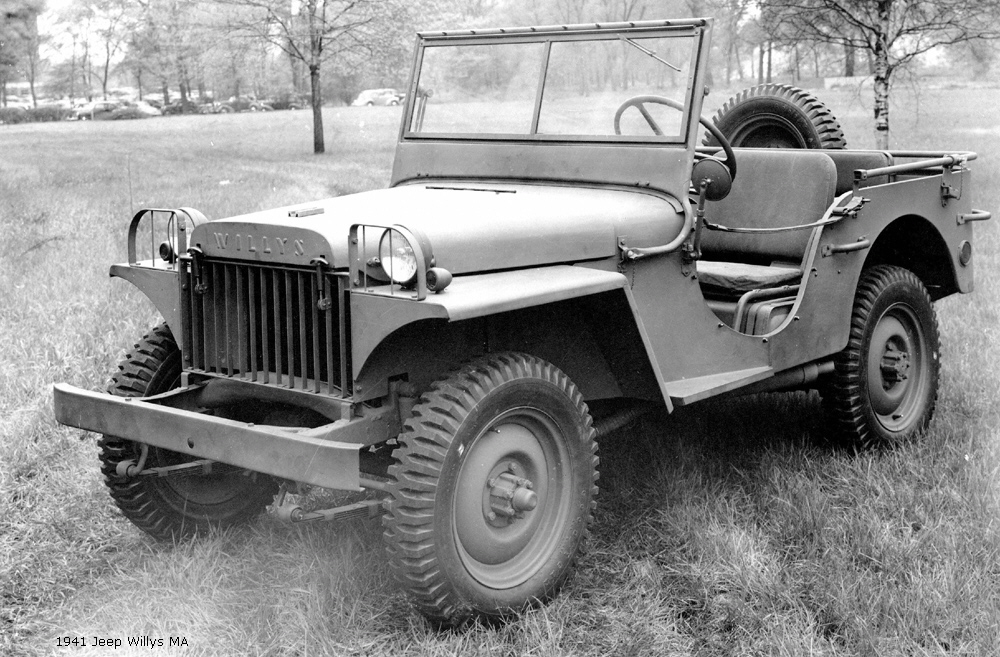
Jeep History
In July 1940, the U.S. military informed automakers that it was looking for a “light reconnaissance vehicle” to replace the Army’s motorcycle and modified Ford Model-T vehicles. The Army invited 135 manufacturers to bid on production and developed a lengthy specification list for the vehicle, including the following:
- 600-lb. load capacity
- Wheelbase less than 75 inches
- Height less than 36 inches
- Smooth-running engine from 3 to 50 miles per hour
- Rectangular-shaped body
- Four-wheel drive with two-speed transfer case
- Fold-down windshield
- Three bucket seats
- Blackout and driving lights
- Gross vehicle weight below 1,300 lbs.
At first, Willys-Overland and American Bantam Car Manufacturing Company were the only two companies answering the call. Soon, however, Ford Motor Company entered the picture, and competition began among the three over which company would receive the lucrative government contract. Each company produced prototypes for testing in record time. Bantam’s chief engineer, along with a team of Bantam executives, worked out a design, and the company built its field car within 49 days. Willys-Overland Vice President of Engineering Delmar G. Roos designed the Willys Quad. Ford developed its Model GP (General Purpose), known as the Pygmy, which was powered by an adapted Ford/Ferguson tractor. Each company delivered its prototype to the Army in the summer of 1940 and received approval to build 70 sample vehicles.
The Army took possession of these vehicles in November 1940 at Camp Holabird, Md. Each of the three designs exceeded the Army’s specification of 1,300 lbs., but the Army soon realized that limit was far too low and raised it for the next round of vehicles. The Army issued the next round of contracts in March 1941. Bantam was to produce 1,500 Model 40 BRC vehicles, Ford would build 1,500 modified and improved GP Pygmies and Willys would build 1,500 Quads. Further testing and evaluation led to the Army’s selection of Willys vehicle as the primary manufacturer. Subsequently, most of the Bantams and Ford GPs produced were sent to Great Britain and Russia as part of the lend-lease program. In Great Britain, the Ford vehicle was popularly known as the “Blitz Buggy.”
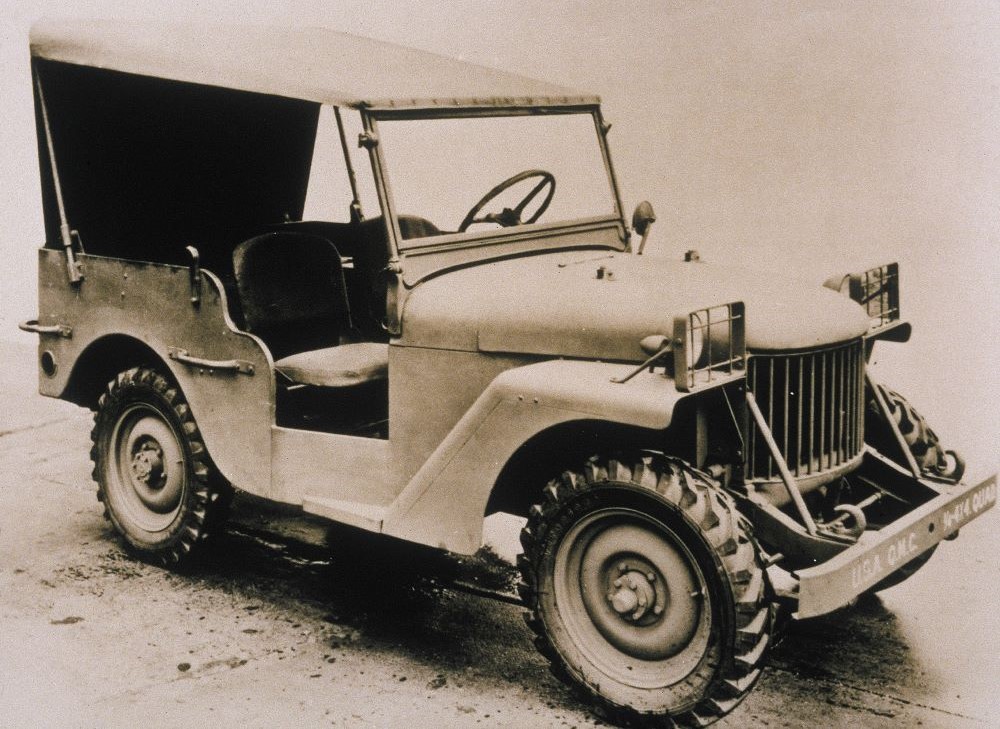
1940 Willys Quad Pilot: Willys-Overland delivered the prototype “Quad” (named for the 4×4 system it featured), to the U.S. Army on Armistice Day, November of 1940. Only two prototypes were made.
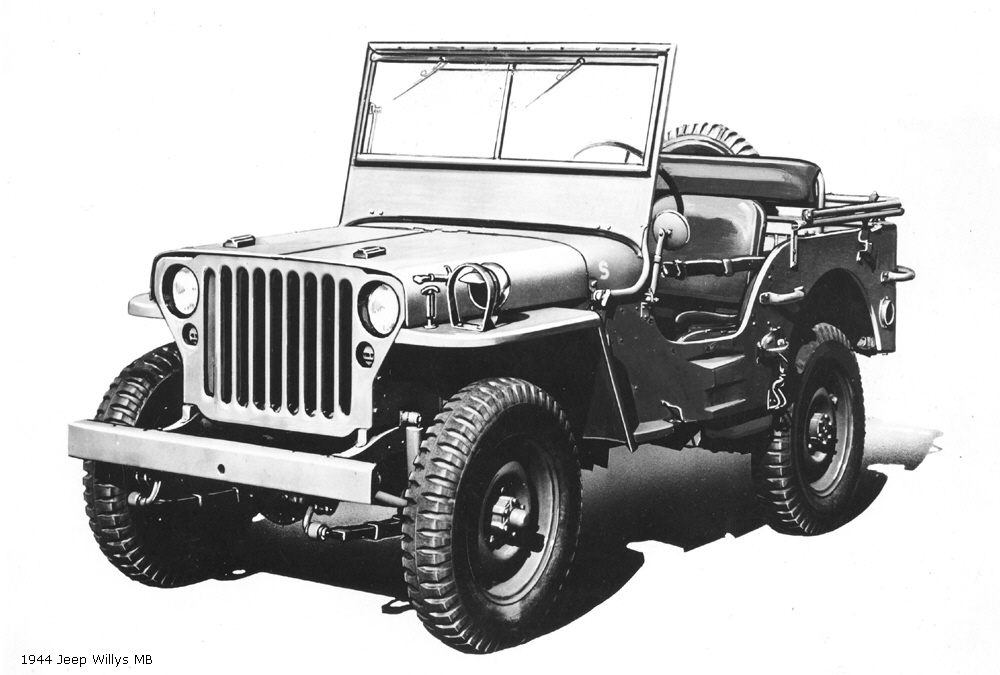
Willys MA/MB
With modifications and improvements, the Willys Quad became the MA, and later the MB. But the Army, and the world, came to know it as the Jeep. Some claimed that the name came from the slurring of the letters “GP,” the military abbreviation for “General Purpose.” Others say the vehicle was named for a popular character named “Eugene the Jeep” in the Popeye cartoon strip. Whatever its origin, the name entered into the American lexicon and, for a while, served almost as a generic title for off-road vehicles, while the Jeep itself became an icon of the war.
The Willys MA featured a gearshift on the steering column, low side body cutouts, two circular instrument clusters on the dashboard and a hand brake on the left side. Willys struggled to reduce the weight to the new Army specification of 2,160 lbs. Items removed in order for the MA to reach that goal were reinstalled on the next-generation MB resulting in a final weight of approximately just 400 lbs. above the specifications.
Willys-Overland would build more than 368,000 vehicles, and Ford, under license, some 277,000, for the U.S. Army. The rugged, reliable olive-drab vehicle would forever be known for helping win a world war. Willys trademarked the “Jeep” name after the war and planned to turn the vehicle into an off-road utility vehicle for the farm – the civilian Universal Jeep. One of Willys’ slogans at the time was “The Sun Never Sets on the Mighty Jeep,” and the company set about making sure the world recognized Willys as the creator of the vehicle.

OVERVIEW OF KEY HISTORICAL JEEP CIVILIAN VEHICLES
Explore the Jeep CJ series history and features of these 4×4 vehicles, from the CJ-2A to the CJ-7. In Jeep CJ series, CJ short for “civilian Jeep”.
Jeep CJ-2A (1945-1949)
The first civilian Jeep vehicle, the CJ-2A, was produced in 1945. It came with a tailgate, side-mounted spare tire, larger headlights, an external fuel cap and many more items that its military predecessors did not include. Several CJ-2A features – such as a 134-cubic-inch I-4 engine, a T-90A transmission, Spicer 18 transfer case and a full-floating Dana 25 front and Dana 23-2 rear axle – were found on numerous Jeep vehicles in future years. The CJ-2A was produced for four years.
- 1945. First civilian Jeep®, CJ-2A, is introduced
- 1949. Two-door Jeepster introduced with four-cylinder Willys engine
Jeep CJ-3A (1949-1953)
Introduced in 1948, the CJ-3A was very similar to the previous model, but featured a one-piece windscreen and a more robust rear axle, and retained the original L-head four-cylinder engine.
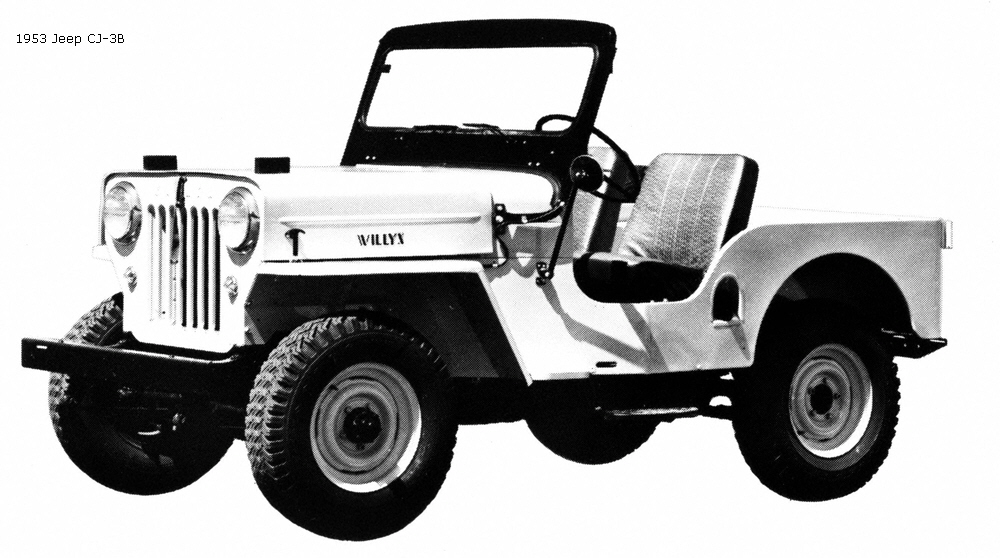
Jeep CJ-3B (1953-1968)
The CJ Model was updated in 1953, becoming the CJ-3B. It had a taller front grille and hood than its military predecessor in order to accommodate the new Hurricane F-Head four-cylinder engine. The CJ-3B remained in production until 1968 and a total of 155,494 were manufactured in the U.S. In 1953, Willys-Overland was sold to Henry J. Kaiser for $60 million. The Kaiser Company began an extensive research and development program that would broaden the Jeep product range.
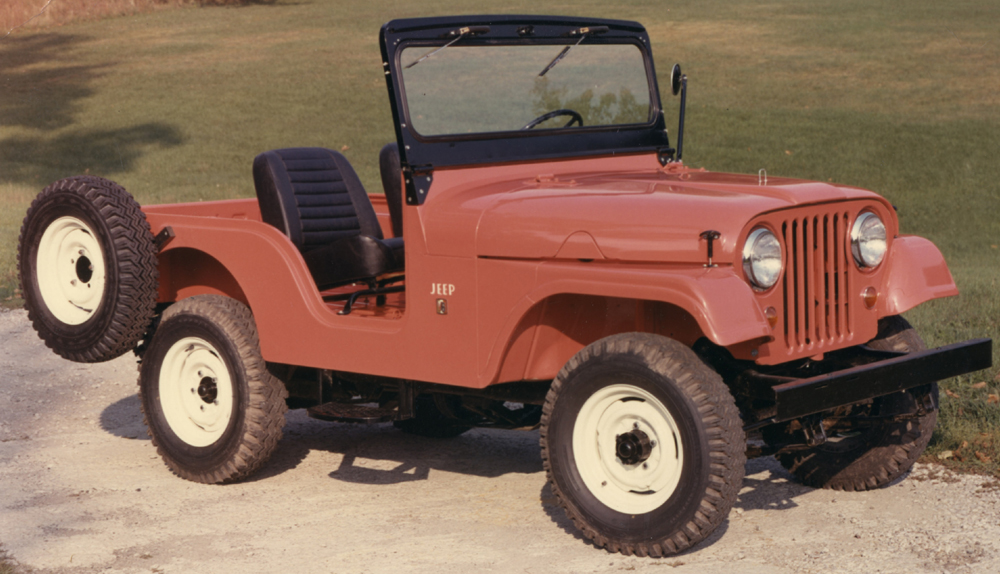
Jeep CJ-5 (1955-1983)
In 1955, Kaiser introduced the CJ-5, based on the 1951 Korean War M-38A1, with its rounded front-fender design. It was slightly larger than the CJ-3B, as it featured an increased wheelbase and overall length. Improvements in engines, axles, transmissions and seating comfort made the CJ-5 an ideal vehicle for the public’s growing interest in off-road vehicles. The CJ-5 featured softer styling lines, including rounded body contours. With an 81-inch wheelbase, more than 600,000 CJ-5s were produced over 30 years.
In 1970, American Motors Corporation acquires Jeep Corporation. Four-wheel-drive vehicles had become more popular than ever, and by 1978, total Jeep vehicle production was up to 600 vehicles a day.
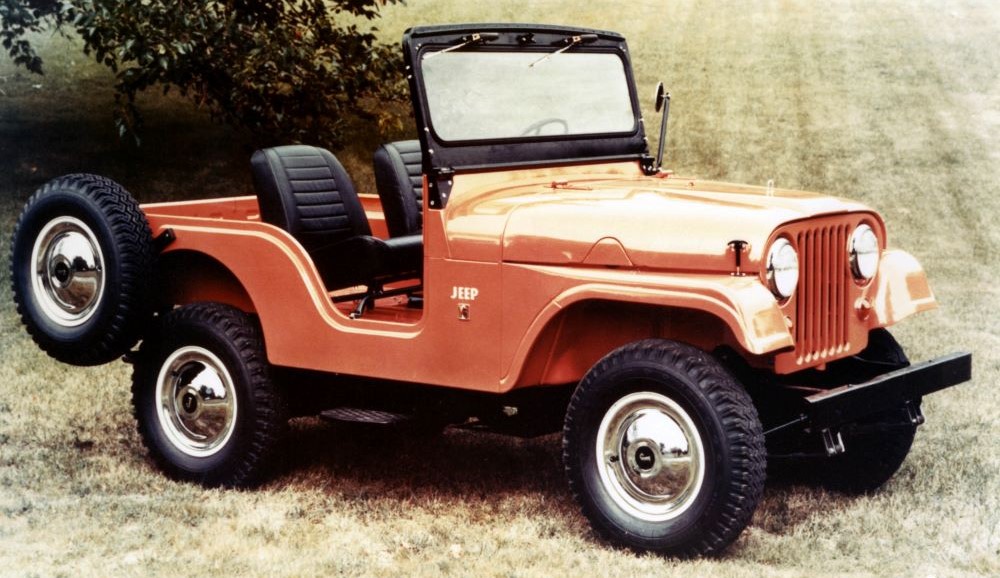
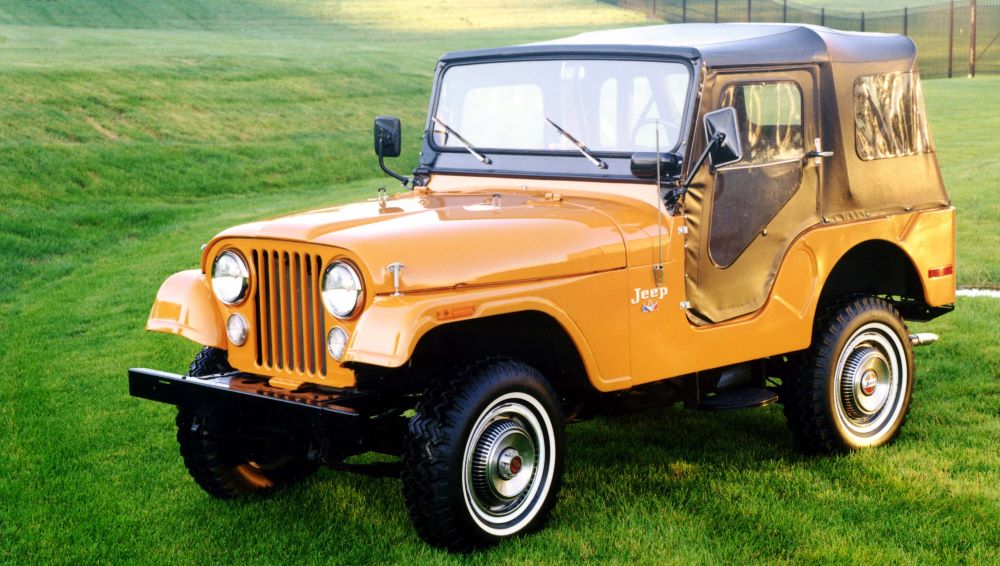
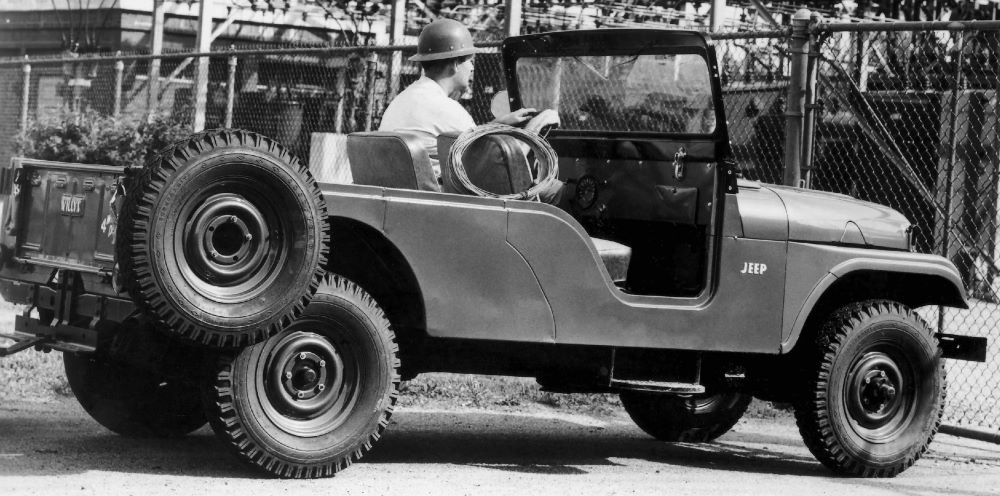
Jeep CJ-6 (1956-1975)
A long-wheelbase (20 inches longer than the CJ-5) model was introduced and was known as CJ-6. Apart from a longer wheelbase, the CJ-6 was almost identical to the CJ-5, but with more cargo space. Jeep also introduced a forward-control cab-over-engine variation to the CJ line in 1956. AMC equipped both the CJ-5 and CJ-6 with heavier axles, bigger brakes and a wider track. In 1965, a new “Dauntless” V-6 engine was introduced as an option on both the 81-inch wheelbase CJ-5 and 101-inch wheelbase CJ-6.
The 155-horsepower engine almost doubled the horsepower of the standard four-cylinder engine. It was the first time a Jeep CJ could be equipped with a V-6. Beginning in 1973, all Jeep CJs came equipped with AMC-built 304- or 360-cubic-inch V-8 engines. AMC equipped both the CJ-5 and CJ-6 with heavier axles, bigger brakes and a wider track. Another first introduced by Jeep in 1973 was Quadra-Trac, the first automatic full-time four-wheel-drive system. Quadra-Trac was available in full-size Jeep trucks and wagons as well as the CJ-7.
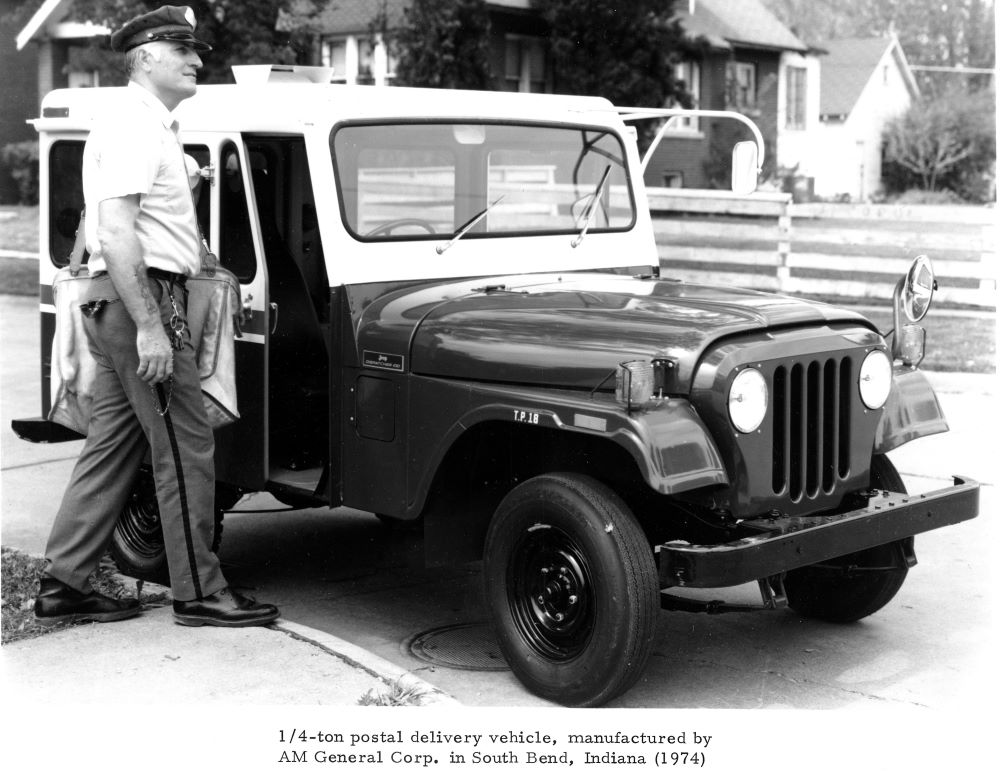
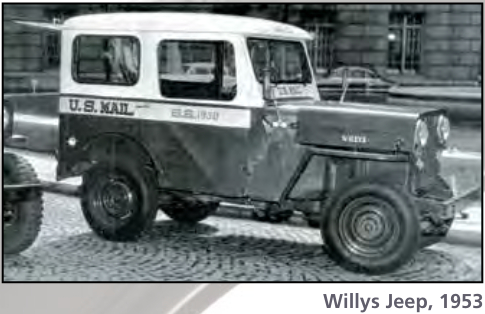 City Mail Delivery Jeeps
City Mail Delivery Jeeps
Jeeps were used by letter carriers on suburban delivery routes from the 1950s through the late 1980s. Postal vehicles were painted red, white and blue from 1954 until 1979, when an all-white color scheme was adopted.
Until 1970, most city letter carriers delivered mail on foot. Although some enterprising letter carriers in Los Angeles used their own autos to deliver mail as early as 1912 — cutting their eight-hour workday down to four — the Post Offce Department did not motorize city delivery routes until the 1950s, in response to unprecedented suburban growth.
The Department had motorized more than half of its residential routes by 1969 with Jeeps, three-wheeled mailsters, and sit-stand trucks. Jeeps were in general use in the 1970s and 1980s

Jeep CJ-7 (1976-1986)
In 1976, AMC introduced the CJ-7, the first major change in Jeep design in 20 years. The CJ-7 had a slightly longer wheelbase than the CJ-5 in order to allow space for an automatic transmission. For the first time, the CJ-7 offered an optional molded plastic top and steel doors. Both the 93.5-inch wheelbase CJ-7 and 83.5-inch wheelbase CJ-5 models were built until 1983 when demand for the CJ-7 left AMC no choice but to discontinue the CJ-5, after a 30-year production run.
During 11 years of production, the CJ-7 had various common trim packages:
- 1976-1986 Renegade (2.4D L6-2.5-4.2-5.0 AMC 304 V8)
- 1976-1980 Golden Eagle (5.0 AMC 304 V8)
- 1980 Golden Hawk (5.0 AMC 304 V8)
- 1980-1986 Laredo (2.4D-4.2 I6)
Jeep also produced two special edition CJ-7 packages:
- 1982-1983 Limited (2,500 units were built as a limited-production luxury model; 4.2 L I6 with T5 or automatic transmissions)
- 1982 Jamboree Commemorative Edition (630 numbered units built for the 30th anniversary of the Rubicon Trail.
with only 630 units produced (560 Topaz Gold Metallic and 70 Olympic White), the CJ-7 Jamboree is the rarest CJ-7 ever built and one of the rarest Jeeps of all time. The Jamboree is in the same production rarity class as the 1971 CJ-5 Renegade-II. It is the most heavily optioned CJ ever built; it was the Rubicon of its day. All units were uniquely numbered via a dash plaque; it is the only AMC Jeep to have been numbered.[80]
The Jeep CJ-7 Golden Eagle is a notable model from Jeep’s iconic CJ (Civilian Jeep) series, known for its rugged design and off-road capability. The 4WD System was part-time four-wheel drive with manual locking hubs, Ground Clearance: About 8.2 inches and Designed to handle rough and uneven terrain effectively
Golden Eagle Package:
- Distinctive hood decal featuring a large golden eagle
- Unique Golden Eagle graphics and trim
- Special wheels and tires
- Interior enhancements such as high-back seats and a special steering wheel
Engine Options:
- Standard Engine: 4.2L (258 cu in) AMC straight-six engine
- Optional Engines: 5.0L (304 cu in) AMC V8 engine
Transmission Options:
- Manual: 3-speed manual transmission
- Optional: 4-speed manual transmission or 3-speed automatic transmission
Features and Specifications:
- Wheelbase: 93.5 inches
- Length: 148 inches
- Width: 68.5 inches
- Height: 66 inches
- Curb Weight: Approximately 2,800 to 3,000 pounds

Jeep CJ-8 (1981-1986)
In 1981, Jeep introduced the Scrambler CJ-8, Jeep’s first convertible, compact truck.. The Jeep CJ-8, also known as the Scrambler, is a notable model in the Jeep CJ series, distinguished by its extended wheelbase and pickup truck bed. The CJ-8 was a long-wheelbase version of the CJ-7, introduced in 1981 and manufactured through 1986. It featured a 103.5 in wheelbase and a removable half cab, creating a small pick-up style box instead of using a separate pickup bed. The Bed Length was about 5 feet, making it functional for light-duty hauling. The CJ-8 Scrambler was designed to provide the versatility of a pickup with the off-road prowess of a Jeep.
Engine Options:
- 2.5L AMC I4 engine
- 4.2L AMC I6 engine
Transmission Options:
- Manual: 4-speed manual transmission
- Optional: 5-speed manual transmission or 3-speed automatic transmission
Features and Specifications:
- Wheelbase: 103 inches (10 inches longer than the CJ-7)
- Length: 177.3 inches
- Width: 68.5 inches
- Height: 69.6 inches
- Curb Weight: Approximately 3,000 to 3,400 pounds

You must be logged in to post a comment.